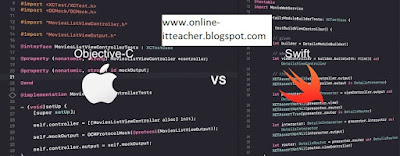Introduction of Objective-C Programing language
Objective-C is a high-level, object-oriented programming language that was developed in the early 1980s by Brad Cox and Tom Love. It is widely used for developing applications for Apple's MacOS and iOS operating systems, as well as for the Cocoa and Cocoa Touch frameworks.
Objective-C is an extension of the C programming language, adding object-oriented features such as classes, methods, and inheritance. It is known for its dynamic binding, which allows developers to change the behavior of a program at runtime. Objective-C also has a rich set of libraries and frameworks, making it a popular choice for developing complex and feature-rich applications.
Benefits of Objective-C Programing language
Object-oriented programming paradigm
Dynamic binding of method calls
Dynamic loading of code
Garbage collection
Support for exceptions
Interoperability with C and C++
Large developer community
Large number of third-party libraries and frameworks
Support for iOS and macOS development
Built-in support for object serialization
Support for protocol-oriented programming
Support for blocks and closures
Support for categories and extensions
Support for key-value coding and key-value observing
Support for automatic reference counting
Support for multi-threading and concurrency
Support for dynamic method resolution
Support for reflection and introspection
Support for automatic memory management
Support for C++-style templates
Support for fast and efficient memory management
Support for dynamic libraries
Support for automatic garbage collection
Support for the Model-View-Controller design pattern
Support for automatic property synthesis.
History of Objective-C Programing language
Objective-C is a high-level programming language that was developed in the early 1980s. It was created by Brad Cox and Tom Love at their company, Stepstone, as an extension of the C programming language. Objective-C was designed to add object-oriented programming capabilities to C, which previously had only procedural programming capabilities.
In the late 1980s, NeXT, a company founded by Steve Jobs after he left Apple, adopted Objective-C as the primary programming language for its NeXTSTEP operating system and developer tools. This helped to popularize the language and led to its widespread use in the development of software for the Macintosh and later, iOS, and macOS.
In 2014, Apple announced that it would begin transitioning away from Objective-C and towards its own programming language, Swift. Swift was designed to be more modern and safer than Objective-C, while still being compatible with existing Objective-C code.
Today, Objective-C is still widely used by developers, particularly in the development of iOS and macOS apps, but it is gradually being phased out in favor of Swift. Many developers are still using Objective-C for older projects and for developing software for older versions of iOS and macOS.
Comparison of Objective-C Programing language with other Programing language
Objective-C is an object-oriented programming language that is commonly used for developing applications for Apple's MacOS and iOS operating systems. It is a high-level, general-purpose language that is known for its dynamic binding, which allows for messages to be sent to objects at runtime.
In comparison to other programming languages, Objective-C is relatively similar to C and C++, as it is a superset of C and shares a similar syntax. However, it has a number of features that are specific to the Objective-C language, such as its dynamic binding and message passing capabilities.
Objective-C is also similar to other object-oriented languages, such as Java and C#, in that it supports encapsulation, inheritance, and polymorphism. However, it has a unique syntax for defining classes and methods, as well as its use of the Smalltalk-style messaging system.
In comparison to newer languages such as Swift, Objective-C has a steeper learning curve and is less modern in terms of language features, but it has been around for much longer and has a much larger community and codebase.
Interoperability with C and C++ of Objective-C language
Objective-C is a superset of the C programming language, which means that any valid C code can be used in an Objective-C program without modification. This allows developers to easily incorporate existing C code into their Objective-C projects.
Objective-C also has a feature called "Objective-C++" which allows developers to include C++ code in their Objective-C projects, and also allows Objective-C code to be used in C++ projects. However, it is important to note that not all C++ features are supported in Objective-C++ and care should be taken when mixing the two languages.
Additionally, Objective-C code can be called from C++ code and vice versa, allowing for seamless integration between the two languages. This interoperability can be used to leverage the strengths of both languages in a single project, such as using C++ for performance-critical code and Objective-C for its dynamic binding and messaging capabilities.
Overall, Objective-C's compatibility with C and C++ makes it an effective tool for developers looking to build applications for Apple's platforms that can take advantage of existing C and C++ code.








0 Comments